The X Button
Industrial Evolution
by Todd Ciolek,

This column sees me rambling on about the 1990s, when it was rare to see an anime-styled cover poking out of the PC-game shelves at Babbage's. Of course, this made them stand out all the more. I remember one that particularly struck me: Ironblood.
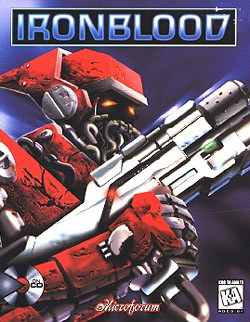
I didn't know much about Ironblood. I didn't know that it was a Korean-made genre hybrid originally called Bloody Signal. I didn't know that it was a lot like Cybernator, which I could play much more easily on my Super NES. I just knew that Ironblood had big ol' anime-style robots, and that made me want to try it. I didn't do so until many years later, and I found it…well, it's OK, I guess. But that cover was something back in the days when anime was an uncommon sight and games “on CD” were just as novel.
NEWS
ATLUS ONLINE MIXES WITH MARVELOUS, EX-NISA FOLKS FORM ACTTIL
We've all seen that diagram showing how most marketed products are controlled by a handful of major companies, and perhaps we've seen additional diagrams claiming that it's all backed by Illuminati lizard-people. I doubt that such collusion drives the game industry, but there are indeed a lot of companies working together. One such case arose recently with XSEED Games acquiring Atlus Online and forming Marvelous USA.
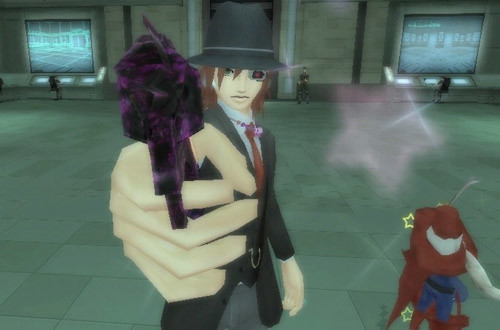
Not all that much changes. Marvelous AQL backed XSEED from the start, and the XSEED label will continue localizing titles under the direction of Ken Berry. Marvelous USA is headed by Shinichi Suzuki, XSEED's current president and Atlus USA's former president. Marvelous Online's digital releases fall under Tatsuya Nishioka of Marvelous AQL, and that presumably includes all of Atlus Online's RPGs, like Shin Megami Tensei Imagine (above) and Pandora Saga. So things should proceed as normal. There'll just be one more link for game-industry conspiracy theorists to connect.

Meanwhile, three employees of NIS America set out on their own with acttil, a new company specializing in localization, production, marketing, and digital publishing. It's the work of NISA's former VP of Marketing Nao Miyazawa, producer Jack Niida, and Production Department VP Hiroko Kanazashi. They haven't announced any projects just yet, but I take heart that there's another company that might handle imported games in the future.
NEW ETRIAN ODYSSEY ROUNDS OUT THE CAST
The next game in the Etrian Odyssey series technically isn't the next. It's a remake of the original, and it stands apart from the rest of the series in at least one way. Instead of a completely player-chosen party, New Etrian Odyssey: Millennium Maiden provides actual characters to follow the game's storyline. The protagonists are a player-named hero and a gunner named Frederica Irving, who's left without memories after she emerges from a cryo-sleep capsule. They're joined by the medic Simon York and his research partner, alchemist Arthur Charles.

The latest video for New Etrian Odyssey profiles another team member, the noble-born paladin Racoona Sheldon. She has a weakness for delectable cuisine, which she presumably finds by foraging through trash cans and fishing in creeks. Players should be careful not to feed her, lest she become dependent on humans for sustenance and…oh wait, she's named after author Alice Bradley Sheldon's pen name. Never mind.
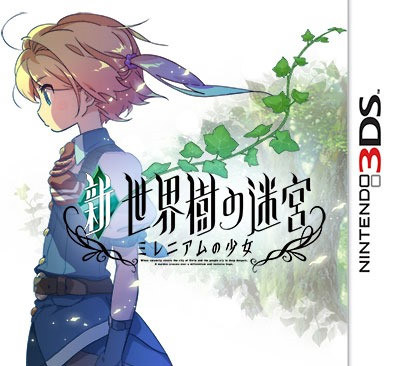
New Etrian Odyssey's creators, including director Shigeo Komori, aren't committing outright heresy for the series. Players can opt for a “classic mode” where they create and command a party of customized characters from the various job classes. Then they can just imagine the various interactions of their party members. Sometimes that's more fun.
CHECK OUT THE STREETS OF RAGE AND ESWAT THAT NEVER WERE
Sega's Streets of Rage just can't make a comeback. The series went dormant after 1994's Streets of Rage 3, though developers often tried to revive it. Core's Fighting Force started out as Streets of Rage 4 for the Sega Saturn, but it ultimately ended up as a different game on every platform but the Saturn. In 2011, Sega had a fan-crafted Streets of Rage Remake pulled from online distribution. There's one more aborted Streets of Rage that never came to be, and it was pitched by Backbone Entertainment.
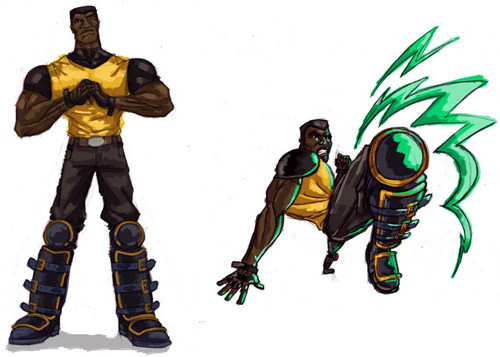
Backbone, makers of Death Jr. and some poorly received classic-game ports, put together concept art for a Streets of Rage revamp. This would've been the original Streets of Rage, as the art shows Blaze and Axel alongside Adam, who wasn't playable in either of the sequels. You can find more art at a former Backbone artist's site.
There's also artwork for Backbone's proposed revival of ESWAT, but I don't know if anyone actually liked ESWAT after 1992.
FEATURE: THE STEAM FACTOR
There was a time, not so long ago, when Japanese games were largely restricted to consoles in the West. Personal computers had a significant presence in Japan's game industry and still do today, but we in North America and Europe didn't see that much of it. Domestic PC owners might've spotted the original Ys games, Megatech's sparse offerings , or some clumsy port of a Japan-made hit already available on consoles. If you wanted the most interesting Japanese PC titles, you imported them and usually made do without a translation.
This was well before the advent of Steam. Valve's online distribution platform now dominates digital sales on PCs, and it's brought rampant exposure to countless smaller-budget games. Amid a burgeoning Western interest in Japan's independent games, Steam's also proven instrumental in shedding light on lesser-seen material from Japanese developers.
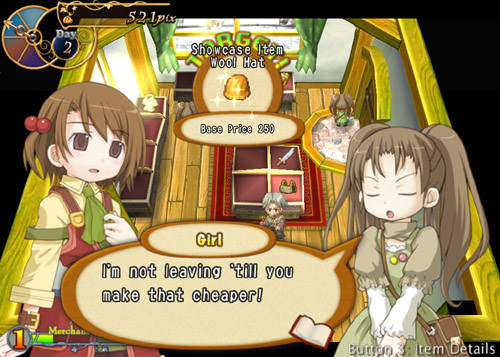
Most of Steam's offerings aren't from the anime-influenced, Japan-made milieu, but it's not difficult to find such things. Carpe Fulgur and Nyu Media, two recently established purveyors of doujin titles, each have a Steam presence. Nyu Media has titles like Fairy Bloom Freesia and Cherry Tree High Comedy Club on the service, while all of Carpe Fulgur's catalog, including the above-pictured Recettear, can be found on Steam.
These games, with the exception of Cherry Tree High Comedy Club, all fall under relatively well-known genres. You'll see far fewer Steam examples of the visual novel, that staple of the Japanese game industry that was once thought box office poison on these shores. Companies are certainly trying to chip into Steam through the Greenlight program; MangaGamer set up pages for both the franchise-starting Higurashi When They Cry and the semi-educational Go! Go! Nippon! ~My First Trip to Japan~ last year, though neither has made it onto the service. At present, the visual novels on Steam consist of titles like thechineseroom's Dear Esther and Christine Love's Analogue: A Hate Story.
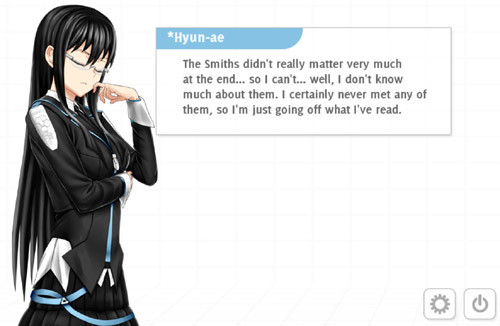
Not that visual novels need Steam so badly. MangaGamer clearly does brisk trade in translating titles for digital release. Perhaps the genre's held back by a lingering bias among the devoted PC-game fans who make up much of Steam's clientele, operating on the assumption that visual novels are irredeemable pornography. The field is by no measure squeaky clean (even the “all-ages” Go! Go! Nippon! has suggestive scenes), but it's unfortunate that some would keep an entire brand of game from a platform well-suited to it.
There's another sector that's under-represented on Steam: the middle-ground company. One can easily find the latest PC versions of titles from Capcom and Konami and Sega, but there's less presence among developers that traffic in modest RPGs and other creations from Japanese developers. Atlus is backing Zeno Clash and not much else, Aksys hasn't made any real stir, and NISA is nowhere to be seen.
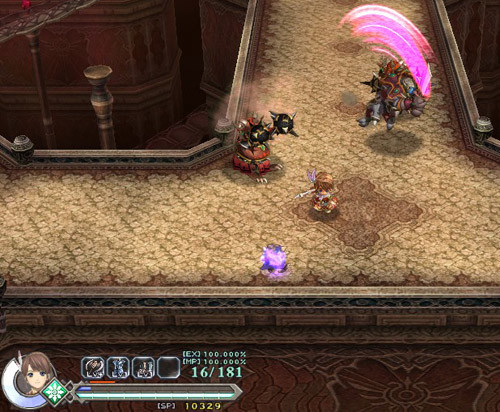
The standout would be XSEED Games and their alliance with Falcom, a company that's never ignored the home computer market. XSEED's brought several games in the long-running (and often-remade) Ys series to Steam, and the service is currently the only place to find the official English version of Ys Origin (above). With Falcom's steady commitment to the PC, many fans are pinning their hopes on more Steam-based RPGs, particularly the partway-localized The Legend of Heroes: Trails in the Sky series.
Steam may well grant a number of these pipe dreams about obscure Japanese titles. The library grows considerably each year, and possible acquisitions pop up in the database all the time; the latest suggests that Naruto Shippuden: Ultimate Ninja Storm 3 is in the running for a Steam release, and listings for several The King of Fighters titles showed up a while ago. Steam may not be the ideal staging ground for fans who like their Japan-made games packed in deluxe box sets, but it might be the best chance for getting more of those games over here.
NEXT WEEK'S RELEASES
THE STARSHIP DAMREY Developer: Level-5
Developer: Level-5Publisher: Level-5 Platform: Nintendo 3DS (eShop) Release date: May 16 MSRP: TBA The Starship Damrey doesn't want to help you. Without preamble it drops you into the role of an amnesiac passenger on a vessel in the depths of space. Having just awakened from a cryogenic slumber, you have no initial clue as to what's happening on board, and you're forced to piece together the situation by exploring the ship and gathering whatever information you can find. And there's more aboard the Damrey than maintenance robots and computer terminals. For one thing, there's a girl in summer attire wandering around, and she seems to be a ghost. Or some hologram, perhaps. It's up to the player to find the answers, all in the absence of tutorials or hints. It's just the way games were long ago…if you lost the instructions and didn't have a Nintendo Power handy. It's easy to see bits of Echo Night: Beyond, Enemy Zero, and Overblood in The Starship Damrey, but the game is the creation of Chunsoft designer Kazuya Asano and writer Takemaru Abiko. They're best known for Kamaitachi no Yoru (Night of the Sickle Weasel), a text-adventure title that was never technically released outside of Japan. It's not unknown on these shores, however; the game greatly influenced Chunsoft's later 999: Nine Hours, Nine Persons, Nine Doors and Zero Escape: Virtue's Last Reward, and I'm sure many of us saw it on Game Center CX. The Starship Damrey is far more approachable in its look, since the player has a 3-D environment to explore. It may also be a shorter affair, considering that Level-5's Guild titles were designed as smaller-scale offerings in an omnibus. But it's always nice to see a game that refuses to hold anyone's hands. |
discuss this in the forum (25 posts) |